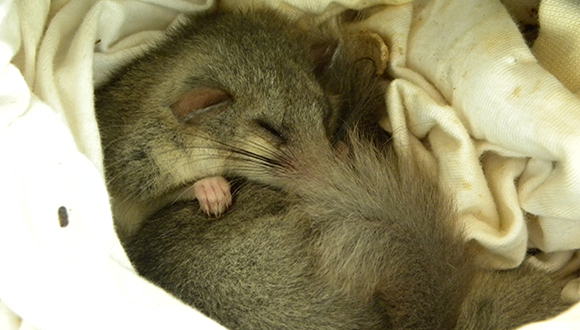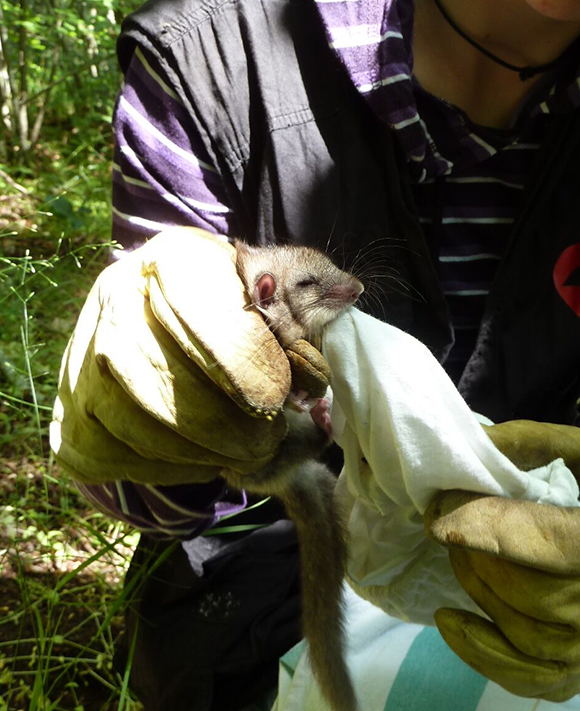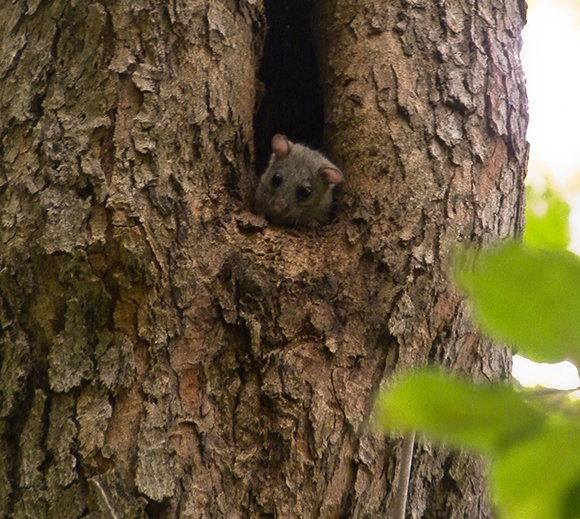Scant dwelling options cause the dormouse to raise a larger number of males
Some populations of the edible dormouse have become isolated due to destruction or severe alteration of their habitat. A recent study by CREAF and the Granollers Natural Science Museum shows that litters from isolated groups have more males than females since the males are the more exploratory sex charged with finding new territories.

Logging and improper management of deciduous oak forests are making it difficult for the edible dormouse (Glis glis) to find natural cavities adequate for nesting, crucial for this species’ reproduction and refuge during its active period. Fragmentation of the forest landscape is also leading to the isolation of the dormouse in some mountain ranges such as the Montnegre range in Spain. A new study led by CREAF and the Granollers Natural Sciences Museum has also emphasized the fact that this is resulting in a greater number of males than females in litters of young. “This tactic may help the population survive since males are the dispersing sex, capable of arriving to new, more favorable habitats and finding new females, thereby avoiding problems such as consanguinity which frequently occurs when there is a low exchange of individuals between populations,” says one of the paper’s main authors, Mariona Ferrandiz-Rovira, professor from the Autonomous University of Barcelona based at CREAF.
The study, published in the journal Animal Biology, compares two populations of the edible dormouse from Catalonian mountain ranges: one from Montseny and the other from Montengre. “With this study we have been able to show that if a habitat allows connectivity with other populations, such as is the case in Montseny, the dormice have litters with an equal number of males and females. On the other hand, when the population doesn’t have any connection with other dormice and the habitat is compromised, such as is the case with Montegre, the dormouse tries to solve this problem with the difference between the sexes of young,” says Dr. Ferrandiz-Rovira. She adds, “dormice from this region are of particular interest because they have new young every year. In other parts of Europe, it is more common for them to breed only in years with favorable climate and food availability.”

For a dormouse, getting sleep has never been so difficult
The edible dormouse (Glis glis) is an animal which can live up to 9 years – much longer than other rodents – thanks to its somnolent nature. When environmental conditions become difficult, it spends a lot of time sleeping, thereby reducing energy and food consumption in order to get through the tough times. However, it requires old trees such as oaks and beeches which offer natural cavities where it can nest or obtain food such as acorns and beechnuts. Climate change and changes in land use are causing a progressive deterioration and loss of habitat for this animal – this is the particular problem faced by the dormice of Montnegre, where oak logging has become quite intensive, above all on private property, as well as along the perimeter of the species’ habitat and in humid forests. These are the kinds of factors which are most threatening to the dormice of the study.
“We don’t think that the strategy of having more males is going to work. Even if they have more exploratory individuals, they are surrounded by Mediterranean forests which are dry, unfavorable habitats for their dens, as well as the AP-7 freeway which separates them from the Montseny population, something which is probably not undertood by the females. In fact, in adult populations there is an equal proportion of the sexes, so this probably means that the ‘extra’ males die trying,” says the researcher.
Studies such as this improve understanding of the dynamics of fauna living in forests affected by global change and are crucial for the establishment of effective conservation policy - in this case, helping to preserve deciduous forests serving as a refuge for these small animals and to help them get some sleep.

Referenced article:
Ferrandiz-Rovira, M.; Freixas L.; Torre I.; Míguez S.; Míguez, S. i Arrizabalaga, A. (2016). Male-biased lliter sex ratio in the southernmost Iberian population of edible dormouse: a strategy against isolation? Animal Biology. 66: 415-425. DOI: 10.1163/15707563-00002512.







